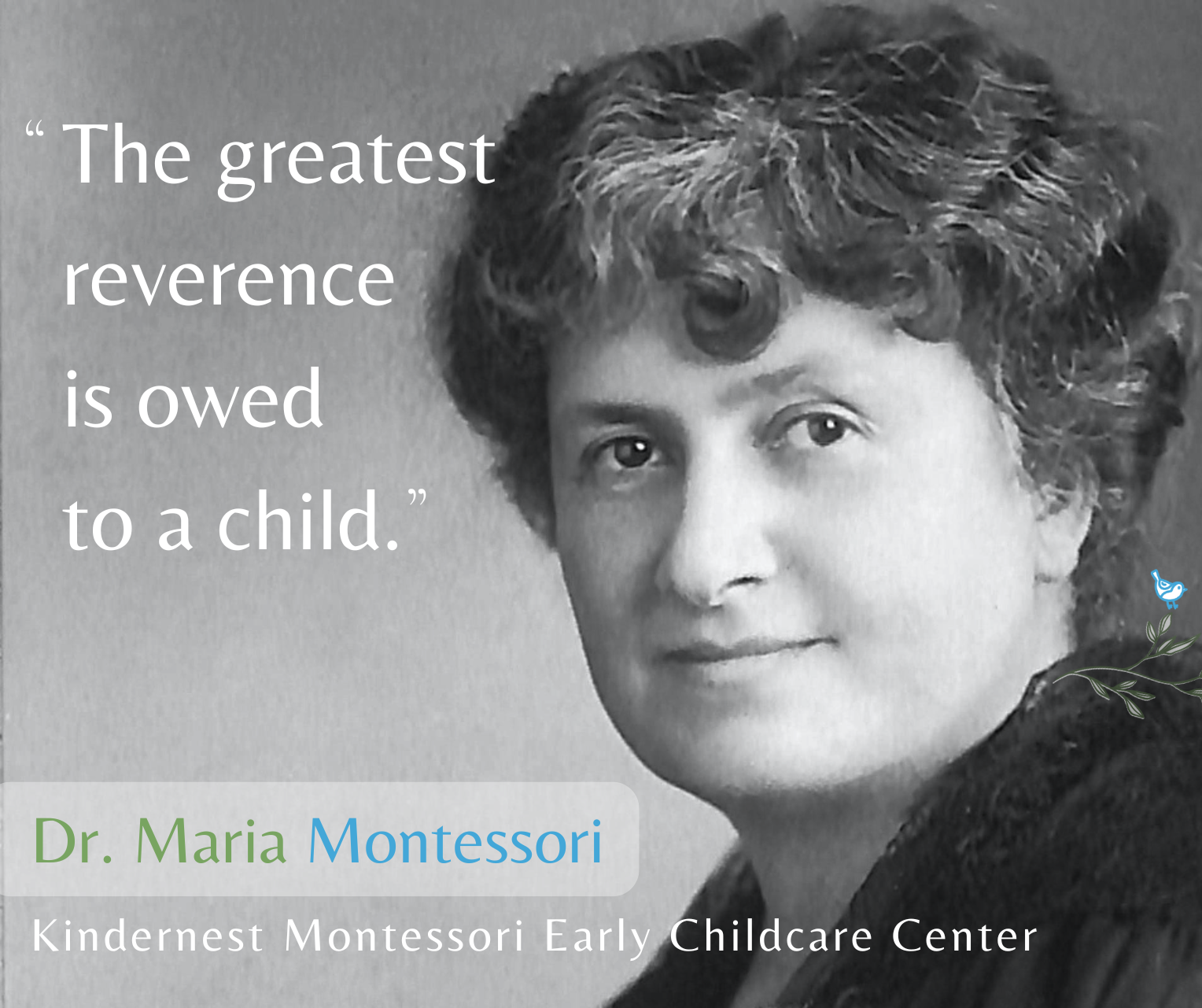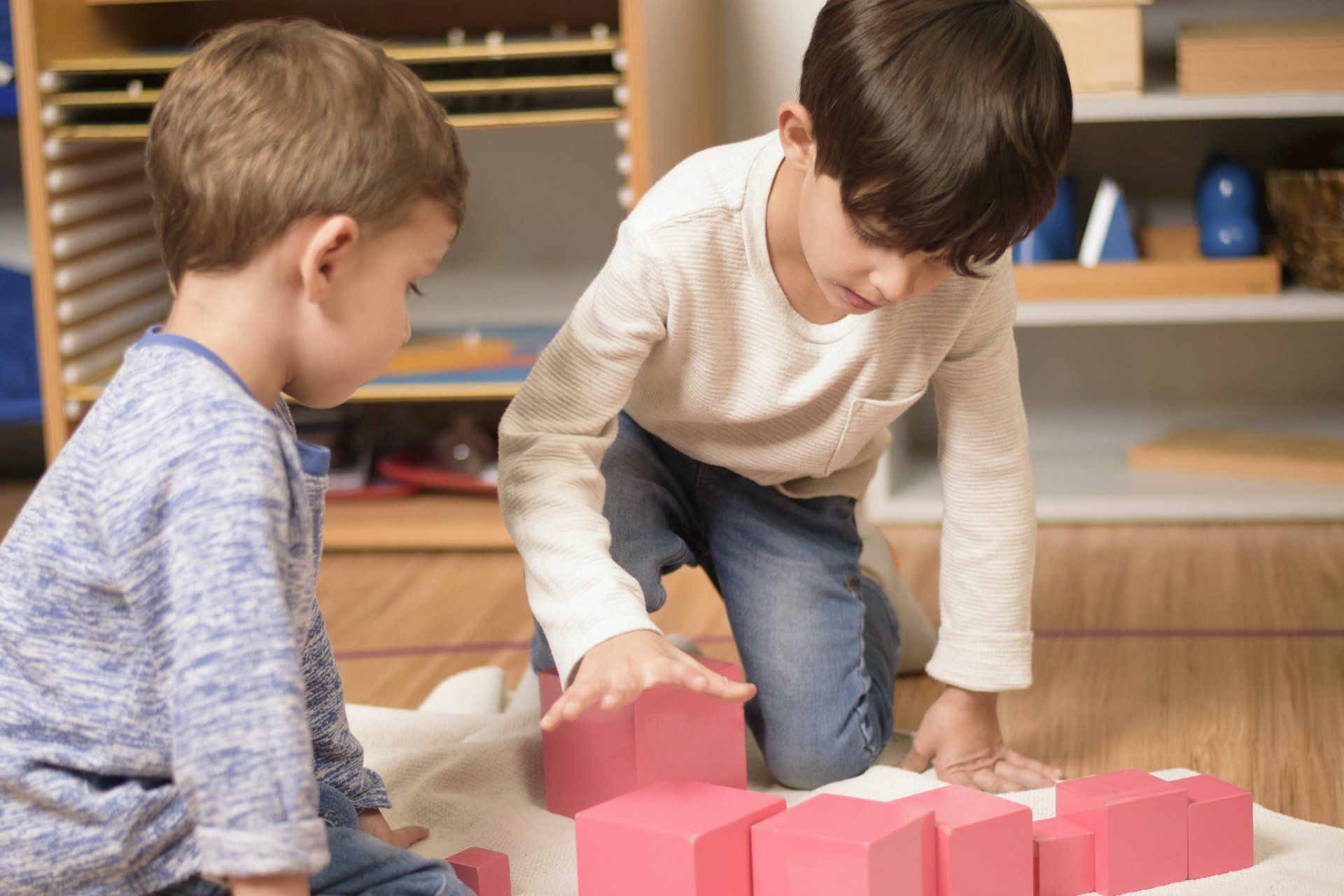
The Theory of the Absorbent Mind
Central to Dr. Maria Montessori's philosophy is the concept of the Absorbent Mind, a term she used to describe the sponge-like ability of young children to absorb knowledge from their environment effortlessly. I often think of the child's brain as taking pictures of everything around them. This theory is based on two fundamental principles.
Sensitive Periods
Montessori observed that children go through specific stages of development where they are particularly receptive to certain types of learning. Children can acquire skills and knowledge more easily and naturally during these sensitive periods. For example, a child in the sensitive period for language will pick up new words and sounds more readily.
Unconscious Learning
According to Montessori, young children (0-3 years) learn unconsciously and effortlessly. They absorb impressions, attitudes, and information from their surroundings without any conscious effort. This process begins at birth and continues until around six, making early childhood a critical time for learning and development. This unconscious learning is the foundation for a child's understanding of culture, language, family rituals, and routines. Young children naturally imitate what is happening around them, but they also absorb the nuances such as the appropriate tone of voice, the accent used, and the smells of what home feels like. As adults, we often prefer things directly related to our absorbent period of life.
How the Absorbent Mind Shapes Learning
The Absorbent Mind theory underscores the importance of providing young children with a rich, stimulating environment. Here's how it shapes learning in the Montessori approach.
Prepared Environment
Montessori classrooms are carefully designed to offer a variety of hands-on activities that cater to different developmental stages and interests. These environments are organized, accessible, and aesthetically pleasing, encouraging children to explore and learn independently. You will notice that Montessori environments tend to have a crisp, uncluttered feel, with sensitivities to color and how much visual input the child is exposed to. This allows the child to understand the environment's patterns and follow their learning style without being overstimulated.
Self-Directed Learning
Children in Montessori settings can choose their activities, fostering independence and self- motivation. This freedom allows them to engage deeply with tasks that interest them, enhancing their ability to absorb and retain knowledge. Classroom teachers consciously and consistently observe children and prepare work (activities) so that they anticipate what kind of work will interest the child. The teacher becomes a link to the environment and learning that helps to support the inner desire to learn and discover. Internal motivation becomes part of the foundation of the child's being, while external is only to attain approval or to receive a reward.
Multi-Age Classrooms
Montessori classrooms typically include children of varying ages. This setup allows younger children to learn from older peers and provides older children with opportunities to reinforce their knowledge by teaching others. This natural social interaction supports the absorbent mind's ability to learn from the environment and peers and better reflects the daily environment a child will experience as they grow.
Respect for the Child
Montessori educators respect each child's learning pace and style. They act as guides, providing support and encouragement rather than direct instruction in a large group. Children are free to work and develop increased concentration levels by being allowed the time to work and feed their interests. This respect helps children develop a positive self-image and a love for learning.
Practical Tips for Parents
Understanding the theory of the Absorbent Mind can help parents create a nurturing and stimulating environment at home.
Here are some practical tips:
- Create a Child-Friendly Space. Designate areas in your home where your child can explore and engage in hands-on activities.
- Provide age-appropriate materials and tools that encourage curiosity and independence. Use shelves to organize toys instead of the toy box or large bins that become a catch-all for items. Children need few choices so they can identify and organize themselves. Executive function is developed in this way.
- Encourage Exploration: Allow your child to explore their interests and passions. Provide various experiences, from nature walks to art projects, that stimulate their senses and intellect. Time in nature is the best possible experience for children, from a city park to an open shoreline. Allow children ample time for discovery.
- Be Patient and observe. Observe your child's interests and developmental stages. Please support them by providing opportunities that align with their sensitive learning periods. The school can help you understand the milestones to look for at each stage.
Foster Independence:
- Encourage your child to try new things and solve problems independently.
- Offer guidance when needed but let them take the lead in their learning journey.
- Take a step back and allow your child to struggle while always ensuring they are safe.
- Children will learn to push through challenging moments, knowing you are there to help if needed. Children learn how to respond by watching us; they are often upset when they see adults lose their cool; we know how to respond from the adults closest to us.
Conclusion:
Montessori's theory of the Absorbent Mind revolutionized early childhood education by highlighting the incredible capacity of young children to learn from their environment. By understanding and embracing this theory, parents can create a home environment that supports their child's natural learning process, fostering a lifelong love of learning and discovery. Embrace Montessori's genius and watch your children flourish as they absorb the world around.


